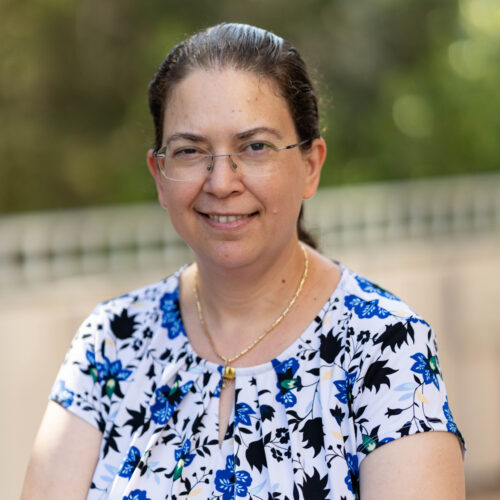- B.A. 2004, summa cum laude, Molecular Biochemistry (Technion)
- Ph.D. 2009, direct-track, Chemistry (Technion)
Maytal Caspary Toroker received her BA degree in molecular biochemistry (2004) and a direct-track PhD degree in theoretical chemistry (2009) at the Technion. After a postdoctoral period at Princeton University funded by the Marie Curie International Outgoing Fellowship from the European Union FP7 (2010-2013) program, she joined the Department of Materials Science in 2013 and is an Associate Professor since 2019. She received several awards for excellence, including International Association of Advanced Materials Award (IAAM-2015), L’Oréal-Unesco-Israel Award (2010), New England Fund (2009), Sara Lee Schupf Post-Doctoral Award (2008/9), and the Levi Eshcol Scholarship (2007-9).
We use computational and theoretical tools to study metals and semiconducting materials. Using quantum mechanics, several material properties are characterized, including structure, electronic conductivity, and magnetism. Specifically, metal-oxide materials are optimized as materials that are able to better absorb solar energy and convert energy and chemicals into electricity and fuels. Applications include several energy converting devices, including photovoltaics and photoelectrochemical cells.
- L. Teitz and M. Caspary Toroker, “Theoretical investigation of dielectric materials for two-dimensional field-effect transistors”, Advanced Functional Materials, doi.org/10.1002/adfm.201808544, in press (2019)
- L. Enman, M. Burke Stevens, M. H. Dahan, M. Nellist, M. Caspary Toroker, S. Boettcher, “Operando X-ray Absorption Spectroscopy Shows Fe Oxidation is Concurrent with Oxygen Evolution in Cobalt-Iron (Oxy)hydroxide Electrocatalysts”, Angew. Chem. Int. Ed., in press (2018).
- J. Zaffran, M. B. Stevens, C. D. M. Trang, M. Nagli, M. Shehadeh, S. W. Boettcher, and M. Caspary Toroker, “Influence of electrolyte cations on Ni(Fe)OOH catalyzed oxygen evolution reaction”, Chemistry of Materials 29(11), 4761 (2017).
- O. Neufeld and M. Caspary Toroker, “A novel high-throughput screening approach for functional metal/oxide interfaces”, J. Chem. Theo. Comp. 12, 1572 (2016).
- O. Neufeld, N. Yatom, and M. Caspary Toroker, “A first principles study on the role of an Al2O3 overlayer on Fe2O3 for water splitting”, ACS Catalysis 5, 7237 (2015).
- M. Caspary Toroker, “Theoretical Insights into the Mechanism of Water Oxidation on Non-stoichiometric and Ti – doped Fe2O3(0001)”, J. Phys. Chem. C, 118, 23162 (2014).
- M. Caspary Toroker and E. A. Carter, “Transition metal oxide alloys as potential solar energy conversion materials“, J. Mater. Chem. A 1, 2474 (2013).
- P. Liao, M. Caspary Toroker, E. A. Carter, “Electron transport in pure and doped hematite“, Nano Lett. 11, 1775 (2011).
- M. Caspary Toroker, U. Peskin. “Electronic Transport through Molecular Junctions with Non-Rigid Molecule-Leads Coupling”, J. Chem. Phys. 127, 154706 (2007).
- M. Caspary, U. Peskin. “Site-Directed Deep Electronic Tunneling Through a Molecular Networks”, J. Chem. Phys. 123, 151101 (2005).
- M. Caspary, L. Berman, U. Peskin, “Thermal Rate Constants for Resonance-Supporting Reaction Barriers by the Flux Averaging Method“, Chem. Phys. Lett. 369, 232 (2003).
- Renewable energy sources. Photovoltaic solar cells based on metal-oxide semiconductors for producing electricity.
- Energy conversion. Solid oxide fuel cells.
- Alternative Fuels. Photoelectrochemical cells based on metal oxide electrodes that can split water and reduce carbon dioxide in order to produce hydrogen and other fuels.
- Metal oxide surfaces and interfaces.
- Interfaces between metals and oxides.
- Material surface chemical activity.
- Developing methods for modeling electronic structure and charge transport across interfaces.



